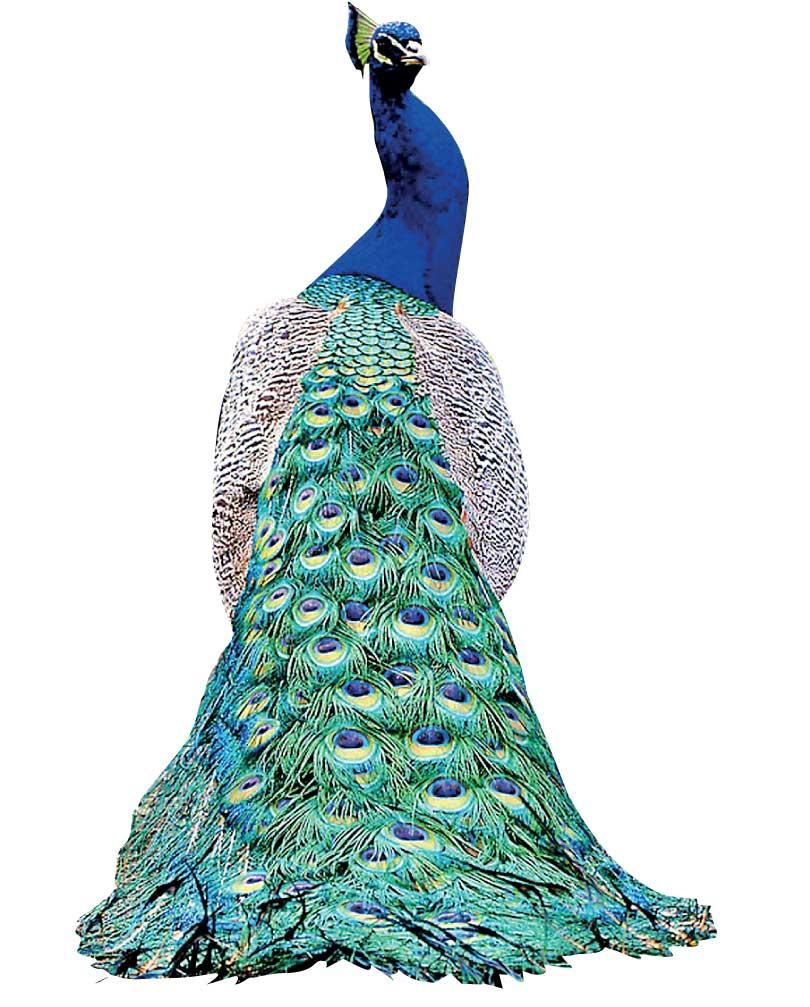Reply To:
Name - Reply Comment
The greatness of a nation and its moral progress can be judged by the way its animals are treated
– Mahatma Gandhi
An Indian professor of Agriculture in Kerala, Mani Chellappan, who is known for his experiments on scaring away crop damaging birds and other animals has successfully experimented methods of scaring away birds including pea-fowls. This Kerala based academic has improved on the tried and tested method that uses polypropylene coated ribbons in the fields to drive the birds away. These holographic ribbons which shine for the sun light are available in the market.
As such it’s indeed sad that some Sri Lankan experts have suggested culling as a means of controlling the increasing pea-fowl population here instead of comparing notes with neighbouring countries which face more or less similar agricultural challenges.
We in Sri Lanka are yet to set up a network whereby we receive a steady flow of information on the agricultural research developments in the neighbouring countries. The absence of such system has left leverage for the hard-hearted to bring down the ethical standards of the Sri Lankan nation to the level of those who are slated to cull some ten thousand innocent feral camels. It’s indeed duplicitous that we who condemn the killing of camels raise our hands for the shooting pea-fowl protection of which is guaranteed by our Flora and Fauna Act.
All what the Ministry of Agriculture has to do is to send a team to Kerala to meet the professor or getting him down to Sri Lanka. It’s indeed worth all the effort given the rise in the cases of crop damage by pea-fowl. According to the studies of the Hector Kobbekaduwa Agrarian Research and Training Institute Sri Lankan farmers have been losing 30 - 40% of their crop annually due to animals.

Interestingly although Peacock is the national bird of India, farmers in Kerala are of the opinion sighting them is a bad sign. It is assumed that the presence of pea-fowls heralds drought. On the other hand, Tamil Nadu which has Lord Murugan Temples in almost every village treats the bird with respect with it being the vehicle of the much revered God. The rapid growth of pea-fowl population in Tamil Nadu and Sri Lanka can largely be attributed to this factor as Murugan, though a Hindu God is revered even by millions of non-Hindus here who frequent the Kovil dedicated to the deity built in Kataragama.
While Tamil Nadu is always known for its pea-fowls it was not the case with Kerala. In 1933, the famous Indian Ornithologist Salim Ali had conducted survey in Kerala and he had not spotted a single peafowl in any of the 19 sites he had surveyed. Seventy-five years after, a team of birdwatchers had visited the same locations and had spotted peafowl in 10 of those 19 locations.
Among Indian states North-Western state of Rajasthan is especially known for its big pea-fowl population which attracts both local and foreign tourists to the state. Last month a farmer in Rajasthan was nabbed for killing some 23 peacocks by laying some grains laced with poison along the field.
It goes without saying that farmer grievances as regards crop damage should be addressed. Often it’s a matter of authorities developing a keen interest in developing methods to help fight farmer challenges. Man has long destroyed the natural habitat of birds and other animals. Having done that, he has no right to take the animal life when the animals reach his territory.